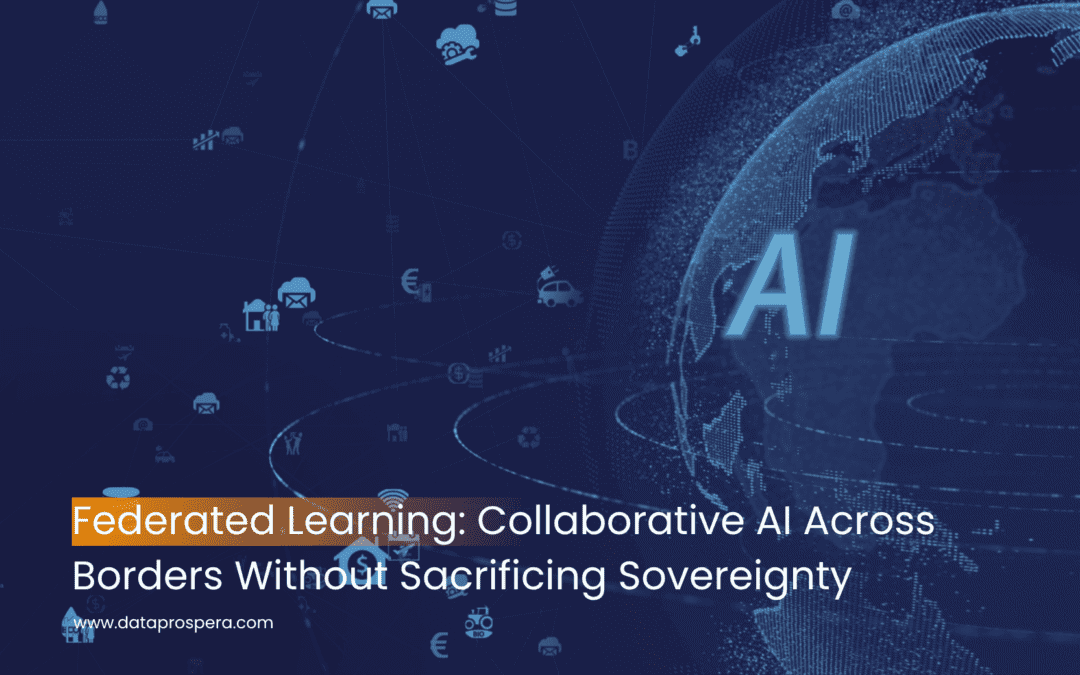Federated Learning (FL) allows organizations to train AI models collaboratively without sharing raw data, addressing data sovereignty, privacy regulation, and cross-border compliance. It enables enterprises in healthcare, finance, automotive, and more to benefit from diverse data sources—without risking data exposure or legal breaches.
1. What Is Federated Learning?
Federated learning is a decentralized model training approach where raw data stays on local servers or devices. Instead of sending data to a central location, only model updates (like weights) are shared and aggregated to create a global model cacm.acm.org+8en.wikipedia.org+8stlpartners.com+8milvus.io+1connectcx.ai+1. This method supports heterogeneous data environments and devices—from smartphones and IoT sensors to on-prem servers—without needing centralized data access .
2. Why It Empowers Sovereign AI
- Data Minimization & Regulatory Compliance
Raw data never leaves its country or device, reducing regulatory risk under GDPR, PIPL, PDP Law, and similar frameworks wired.com+2en.wikipedia.org+2iapp.org+2research.aimultiple.com+1developer.nvidia.com+1. Since data remains on-device, individual data deletion (GDPR Article 17) is straightforward netguru.com+10milvus.io+10arxiv.org+10. - Cross-Border Collaboration Without Compromise
Entities can train global models using local data in legally diverse jurisdictions—healthcare providers, banks, or manufacturers—without transferring sensitive data across borders axios.com+6arxiv.org+6milvus.io+6milvus.io+4stlpartners.com+4developer.nvidia.com+4. - Enhanced Security & Reduced Breach Risk
Keeping data distributed limits centralized breach targets. Secure aggregation and encryption of model updates further minimize exposure developer.nvidia.com+1netguru.com+1cacm.acm.org+10edps.europa.eu+10milvus.io+10.
3. Powerful Real-World Applications
- Healthcare Collaboration
Hospitals use FL to train models on patient data (e.g., sepsis prediction or clinical imaging), preserving confidentiality while improving diagnostics. FedHealth showed +5% accuracy in activity recognition models stlpartners.com+13aws.amazon.com+13arxiv.org+13. - Finance & Fraud Detection
Banks deploy consortium-based federated models (e.g., WeBank’s FedRiskCtrl) that outperform isolated models while preserving customer privacy netguru.comreddit.com+3cacm.acm.org+3netguru.com+3. - Autonomous Vehicles
NVIDIA’s FLARE platform enables cross-country AV model training (for object detection, path planning) while keeping raw driving data within national borders research.aimultiple.com+1developer.nvidia.com+1. - Smart Devices & Productivity Apps
Apple and Google incorporate FL into on-device services like Siri transcription and Gboard suggestions—users contribute improvements without sharing raw data milvus.io+5wired.com+5connectcx.ai+5.
4. Challenges to Overcome
Although promising, federated learning presents notable hurdles:
| Issue | Description |
| Communication Efficiency | Many devices require frequent, reliable connections; update transmission can be bandwidth-heavy arxiv.org+15edps.europa.eu+15stlpartners.com+15netguru.com. |
| Heterogeneous Environments | Devices vary in compute power and data quality, leading to unreliable updates . |
| Model Bias & Fairness | Overrepresenting certain participants can skew outcomes—careful aggregation is essential . |
| Security Threats | Model poisoning attacks remain a risk; robust defenses and encryption are needed . |
5. Best Practices for Sovereign Federated AI
To maximize value while protecting sovereignty and compliance:
- Apply PETs
Use encryption, differential privacy, and secure aggregation to protect model updates netguru.com+7en.wikipedia.org+7research.aimultiple.com+7stlpartners.com+5milvus.io+5netguru.com+5. - Region-Specific Node Setup
Deploy FL participants within compliance zones to align with national data localization laws en.wikipedia.org+6dreambigdata.com+6scalytics.io+6. - Robust Governance & Traceability
Track participation, maintain logs for audits, and ensure adherence to data retention policies scalytics.io. - Balanced Aggregation Strategies
Counter data imbalance and bias using weighted merges, fairness metrics, and dropout-resistant frameworks dreambigdata.com+5netguru.com+5arxiv.org+5. - Edge + FL Integration
Combine federated learning with edge computing for optimized bandwidth, real-time updates, and decentralized processing scalytics.io+3iapp.org+3milvus.io+3.
6. Future Outlook
As sovereign AI and data residency laws grow tighter, federated learning will become a cornerstone of compliant, collaborative innovation by:
- Fostering global model training—in healthcare, finance, manufacturing—while staying compliant
- Enabling cross-border AI ecosystems without raw data exchange
- Integrating government-regulated AI pipelines that respect national frameworks
Forward-thinking managed services should provide federated platforms with built-in data sovereignty controls—secure, compliant, and globally-aware.
Conclusion
Federated learning offers a way to “have your cake and eat it too”: collaborative AI that respects data location and legal constraints. By training models locally and sharing only safe model updates, organizations can achieve better predictive performance, maintain compliance, strengthen security, and increase trust.
If your business is ready to explore federated AI for secure, sovereign, and scalable innovation, Data Prospera’s expertise is ready to guide your journey.


Recent Comments